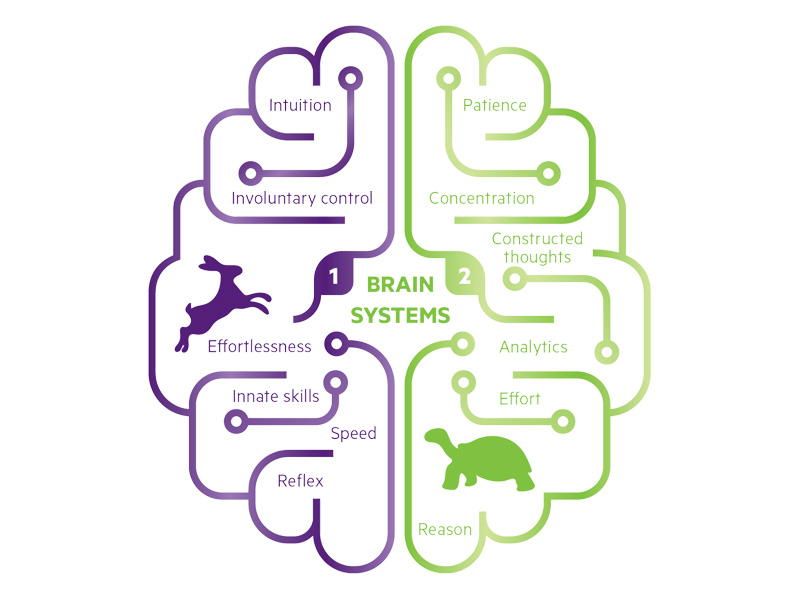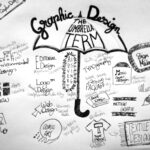
The Self: PART 1 – Who are We?
What is it that Makes ‘Us?’

‘Tell me something about yourself?’
This is probably one of the most difficult questions to answer for me. There is so much information to sift through in my head, filtering what is the most fitting answer, what sounds professional, what sounds cool, what should be left unsaid. The number of possible answers is endless, yet there is only one shot to take, so one really cannot mess it up.
There is no one template answer for this, even if we are all human beings. This is because what makes of ‘the self’ is not always in our complete control. As human beings, we share as much information through our body language as we do verbally, even if we may not always acknowledge it. As we grow up and eventually grow old, we encounter different situations in which we have to respond and react accordingly, shaping our character and personality along the way without even knowing. In addition, this impacts also our morality and how do we value and prioritise things in our life. However, as human beings, we are creatures of instinct by nature, which can make us decide on impulse; our ‘gut feeling’.
This brings to question whether our ‘self’ is embedded in our DNA or it depends on how we are brought up and what do we come across during the course of our lives. Martin Hosken, a lecturer in of Critical Theory, who also hosted this week’s lecture, points out the ‘Nature vs. Nurture’ argument and states that most people under 40 years of age will say that it is a question of ‘nurture, but people over over are more likely to respond ‘nature’. This can mean that as we grow old, our perception of life changes. It could be due to the fact that we have more experience in life as time goes by.
Another element that shapes our ‘self’ is the element of choice and decision making, Daniel Kahneman, in his book ‘Thinking Fast and Slow’, he talks about two systems of thought: The fast, instinctive ‘System 1’ and the slower, more calculated ‘System 2’. Moreover, he also goes on mentioning how these two systems work and how they can be influenced and biased depending on the situation at present. Choice architecture practices, known also as nudges, are unconscious mechanisms that are used to influence are behaviour. Politicians have used such practices when delivering pleasing speeches to influences voters. Nowadays, similar practices are used by marketeers in advertising campaigns to engage with the consumer on an emotional level.

Over the course of time, a lot of scientific research has been done to understand what truly makes up the ‘self’. The unconscious mind still mystifies experts in the fields and there is still room to learn more. It can be described as a journey of discovery; of finding a meaning. For like Carl Gustav Jung said: ‘Man cannot stand a meaningless life’. With that said, is it the conscious mind finds and decides on the meaning, or is it the unconscious that is ultimately decides on that meaning?
The Unconscious and The Archetype
The unconscious mind is a concept that has been studied and researched since the 19th century. It was in this century that psychology and psychiatry were emerging as fields of study in medicine. Neurologists and Psychoanalysts were making groundbreaking discoveries which helped in understanding better human behaviour. In 1895, Gustave Le Bon, a French Polymath, wrote about how an individual is influenced by the surrounding and how human behaviour changes when an individual is part of a crowd. In his book ‘The Crowd: A Study of the Popular Mind’, he describes the behaviour change in an individual as part of a crowd. He describes it as an ‘automated machine’ where the primitive side emerges, Being part of a crowd, an individual is quickly influences by the behaviour of the rest, making it difficult to make an unbiased decision.
Similarly, Sigmund Freud, in his book ‘The Interpretation of Dreams’, The unconscious, which he describes as ‘id’ is an active, at times disruptive part of the human psyche, which is separate from the conscious self. His best description of the human psyche is The Iceberg Model. As one can see, the unconscious is placed at the bottom of the iceberg, deep underwater. Just like an iceberg, which most of is hidden underwater, the unconscious cannot be seen, but we know it is there.

Freud splits the human psyche in three major parts, namely: The Id, which holds instincts, the Ego, which is reality, and the Superego, which holds morality. He was also convinced that the basis of human condition, or one’s self, is held in the Id, for humans are creatures that seek survival, and was the conflict between the Id and the Superego that is suppressing those instinctive urges is what makes us who we are.
However, Jung, disagreed with this theory. His theory was that one’s self is formed through Evolutionary Adaptiveness. Over the course of evolutionary history, human have created Archetypes – patterns that occur reliably in ancestral history, such as a caring mother or an evil witch – through which we have carried with us in our subconscious, hence affecting the way we make decisions. As we project these factors in our head, we can make assumptions and interpret day-to-day life based on these archetypes. Jung also describes ‘The Self’ as a totality of our personality, made up of both the conscious and the unconscious. In addition, he argues that ‘we may never find our sense of self totally, but we can find meaning in the part of self that we know in its totality,
The Constructed Self and Modern Life
Nowadays, we are exposed to various forms of information everywhere, that undoubtedly will influence our way of thinking one way or the other. This has altered the way he see life itself, our sense of need and consumerism. Marketeers and Advertising agencies tap on various stimuli that will tickle the consumer’s interest into choosing their brand over other brands, into reading into one source of information and not the other.

Back in 1928, Edward L. Bernays wrote about what is now described as the modern day marketing machine. In his book ‘Propoganda’, he understood that one should stimulate the consumer’s desire in order to sell more. Therefore by applying Freud’s theories and his new findings, he concludes that a well-balanced combination of commercial arena, media outlet, advertising and performance is the key to success to reach the consumer. This is because one would be bypassing the Ego side of the brain and going straight for the desire.
In ‘The Century of Self’ – a documentary about Freud’s work, directed by Adam Curtis, released in 2012 – brings to light in detail how modern day society is modelled into thinking in a certain way with regards to consumerism and commodification as well as what brings along with it. In addition, it also shows how those in power have used Freud’s theories to try and control the crowd in an age of mass democracy. In the documentary, Curtis investigates how politicians deliver pleasing speeches to appeal the mass audience through the use of psychoanalysis and questions their true intentions.
In this day and age, we are part of a generation that always wants more and wants to be better than the rest. As social media become increasingly popular, we are constantly seeking validation from others. The rise of ‘The Selfie’ has made people wanting more than just a memory. Everyone wants to fit in and crave the perfect postcard life. With that said, many are sacrificing the physical life for the sake of the digital life, which in return brings another question: will the digital self be our new identity in the future? Will it be a separate life? Is it what we crave to be?
As creatives, I think that we should be in the forefront to resist this takeover. The universe cannot resist authenticity. We should move away from our screens and look around us. Technology has its merits, but we should not let it consume us.





